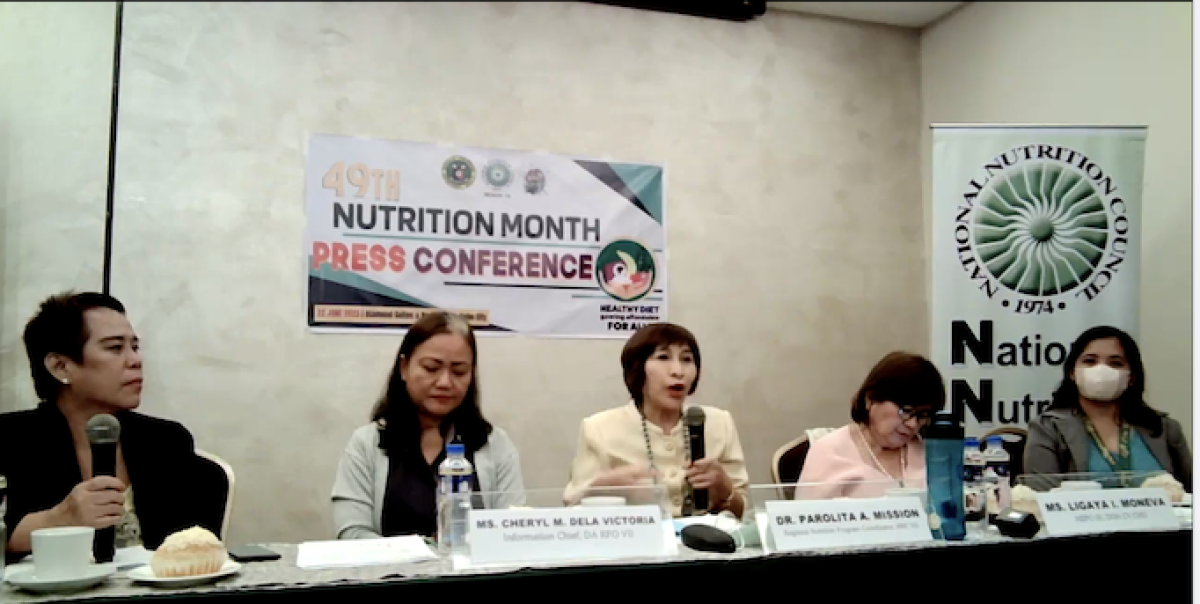CEBU CITY, Cebu, June 26 (PIA) -- The nutrition situation in Central Visayas has now stabilized after the health and nutrition systems gained back its foothold in the delivery of regular nutrition services following the COVID-19 pandemic.
Results of the 2022 Operation Timbang (OPT) show that the nutritional status of children 0-59 months has finally stabilized and returned to its normal course after having spiked abnormally in the past two years.
The situation, however, is threatened by a high poverty incidence, food insecurity, and issues on food consumption.
2022 OPT Plus
Based on the 2022 OPT results, among the types of malnutrition, stunting or chronic malnutrition continues to decrease in both prevalence (from 9.7% in 2021 to 8.5% in 2022) and magnitude from 72,179 children to 55,741 children in the same years.
If not abated, stunting has a significant impact especially on the cognitive development of children and economic development of the community.
Wasting or acute malnutrition has increased in magnitude from 14,382 children to 17,884 children between 2020 to 2021. This has returned to 14,503 children in 2022.
The increase in prevalence of underweight (light for age) and overweight and obesity (weight compared to height/length) which had shown a spike in 2021 had returned to a stable pre-pandemic.
Underweight prevalence, which had increased from 3.97% in 2019 to 4.9% in 2021, has returned to 3.6% in 2022.
On the other hand, overweight and obesity - which had a prevalence rate of 2.78% pre-pandemic in 2019 and peaked at 3.1% in 2021 - has decreased to 2.8% in 2022.
Food insecurity
According to the National Nutrition Council (NNC) Region 7, the improved nutritional status is facing a threat posed by a high poverty incidence rate estimated at 22.1% in 2021 based on data from the Philippine Statistics Authority.
This means that around 1 in every 5 families in Central Visayas have incomes below the amount needed to buy basic food and non-food needs.
NNC-7 noted that this is remarkably higher than the national prevalence rate of 13.2%.
The data is supported by the 2022 WHO Food Security Monitoring Report which reports that Central Visayas is the 4th food insecure region in the country with food insecurity prevalence of 17.2%.
The council also observed that the quality of food consumption in the country has suffered, showing a high consumption of sugars and oils over fruits and meat, respectively.
In a press conference held June 23, Department of Agriculture (DA7) Regional Information Officer Cheryl dela Victoria said that vegetable consumption among the residents remain a challenge.
She said that in 2022, vegetable production in lowland areas in the region producing squash, eggplant, ampalaya, etc. is at 122,000 metric tons while the demand is at 99,000 metric tons.
However, consumption is still below 12.4 percent of the total demand.
Dela Victoria said that vegetable supply in the region is high but its consumption is low, resulting to a high wastage of vegetables which are highly perishable.
Not out of danger
The NNC7 said that while acute types of malnutrition had shown stability, the region is still in danger of a possible problem in chronic malnutrition in a few years as a delayed effect of the pandemic.
This situation could only be addressed by ensuring proper health, nutrition, and food security services to mothers and their babies in the first 1000 days.
The council has called on both the regional and local nutrition committes to take on this challenge of addressing how the region can sustain its improved nutrition situation. (RMN/PIA7 with reports from the National Nutrition Council 7)



